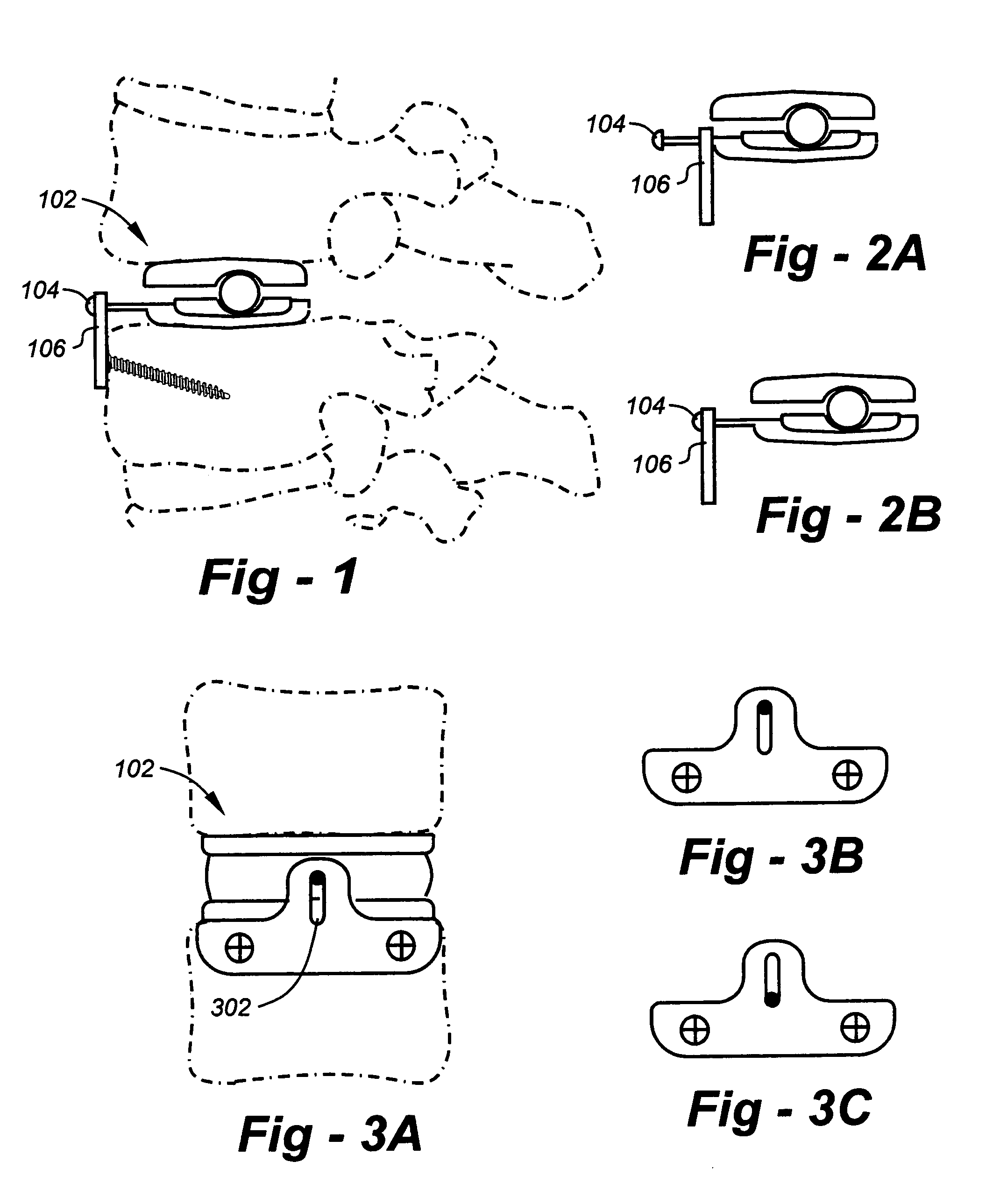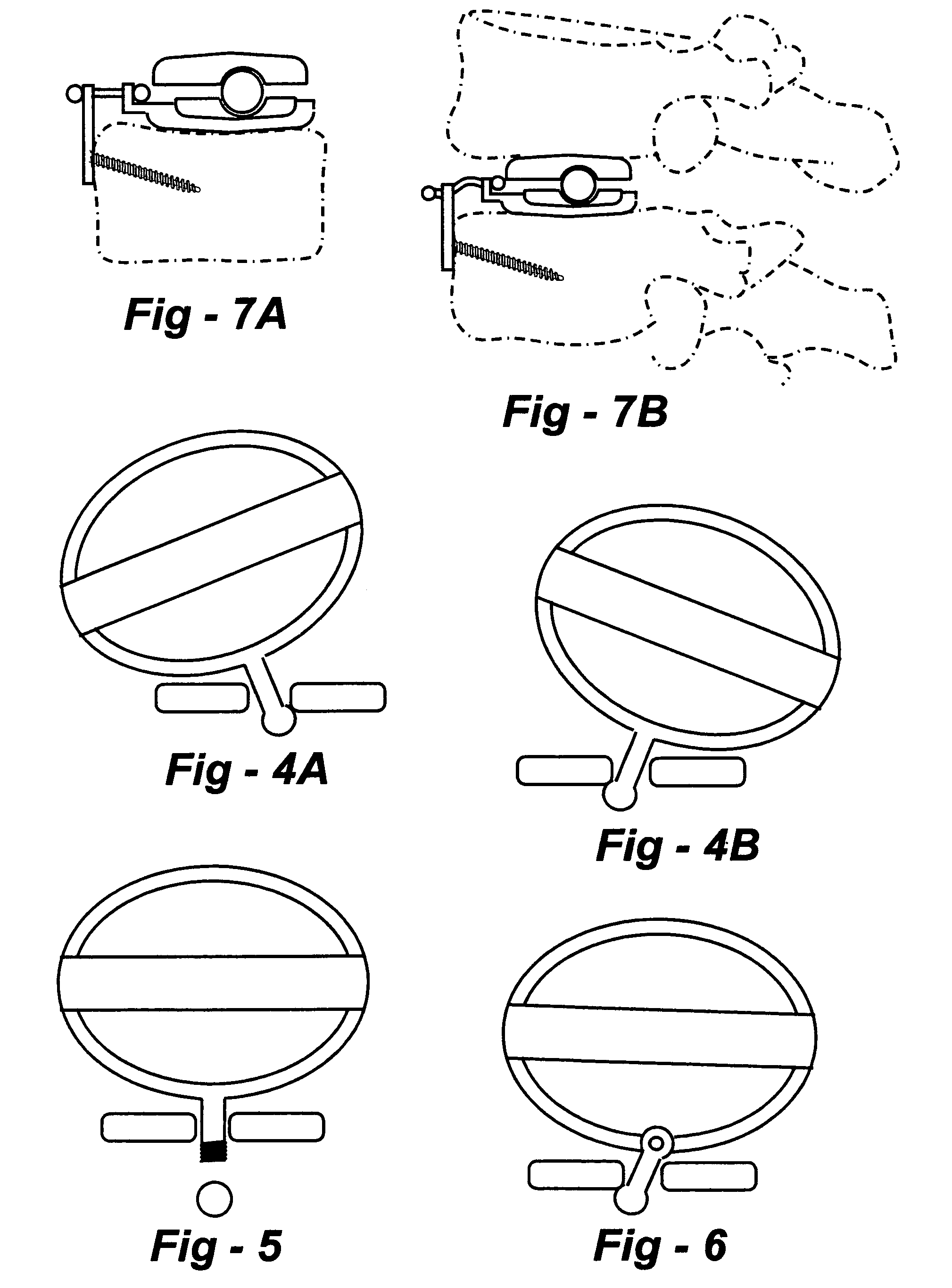Methods and apparatus for preventing the migration of intradiscal devices
a technology of intradiscal devices and preventing migration, which is applied in the field of artificial intervertebral disc replacement and repair, can solve the problems of reduced disc degeneration treatment
- Summary
- Abstract
- Description
- Claims
- Application Information
AI Technical Summary
Benefits of technology
Problems solved by technology
Method used
Image
Examples
Embodiment Construction
[0040]Reference is now made to the drawings, wherein FIG. 1 shows an ADR 102 with an extension 104 to link the ADR to the barrier plate 106, the link member 104 may attach to both the ADR and the barrier plate. Attachment of the link member through a swivel joint to the ADR would further increase the degrees of freedom of motion. The plate and / or link member may be made of metal, polymer, or other suitable material. In addition, the screw holes in the barrier plate may contain an anti-back out feature and converge or diverge.
[0041]FIG. 2A is a side-view drawing of an artificial disc replacement (ADR) coupled to a barrier plate through a link member assuming a first position, and FIG. 2B is a drawing of the configuration of FIG. 2A showing how the link member allows the ADR to piston back and forth through a controlled range of motion.
[0042]FIG. 3A is a front-view drawing of a barrier plate 302 having a slot which permits vertical movement and angulation. FIG. 3B shows one extent of ...
PUM
 Login to View More
Login to View More Abstract
Description
Claims
Application Information
 Login to View More
Login to View More - R&D
- Intellectual Property
- Life Sciences
- Materials
- Tech Scout
- Unparalleled Data Quality
- Higher Quality Content
- 60% Fewer Hallucinations
Browse by: Latest US Patents, China's latest patents, Technical Efficacy Thesaurus, Application Domain, Technology Topic, Popular Technical Reports.
© 2025 PatSnap. All rights reserved.Legal|Privacy policy|Modern Slavery Act Transparency Statement|Sitemap|About US| Contact US: help@patsnap.com



